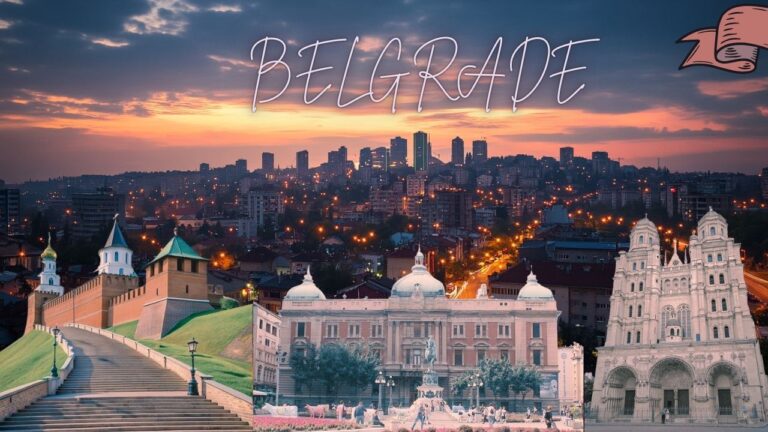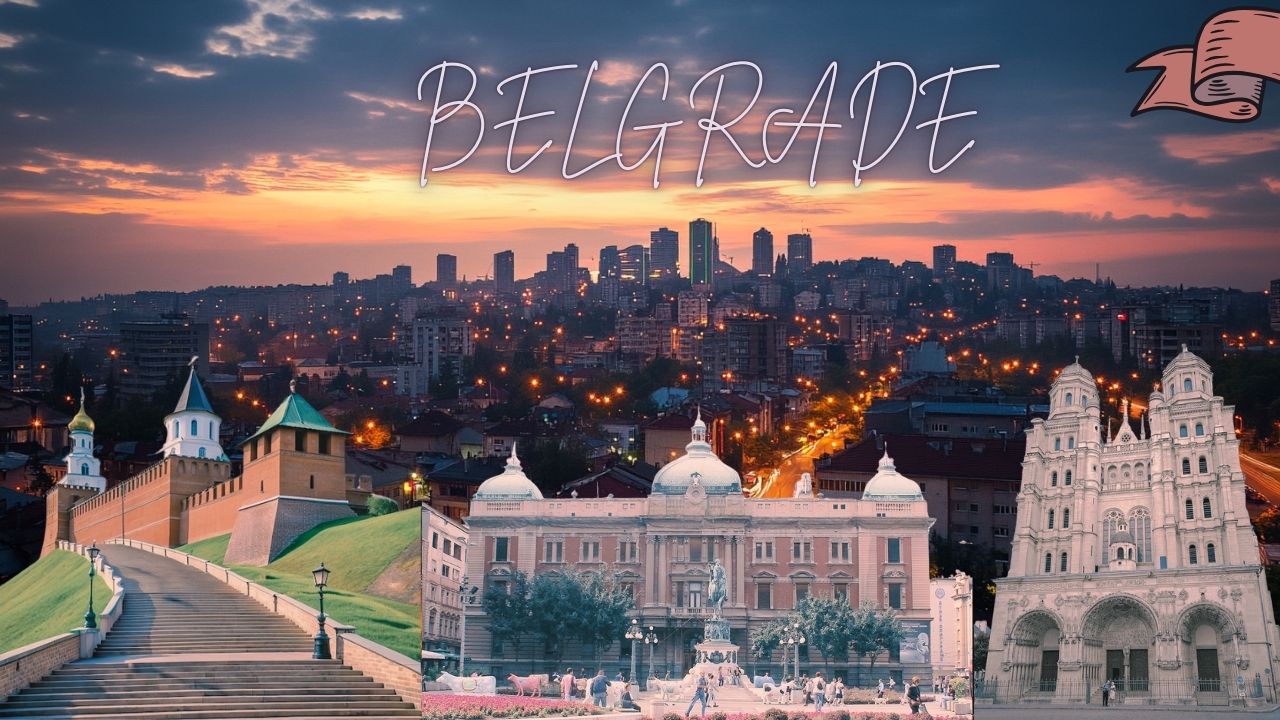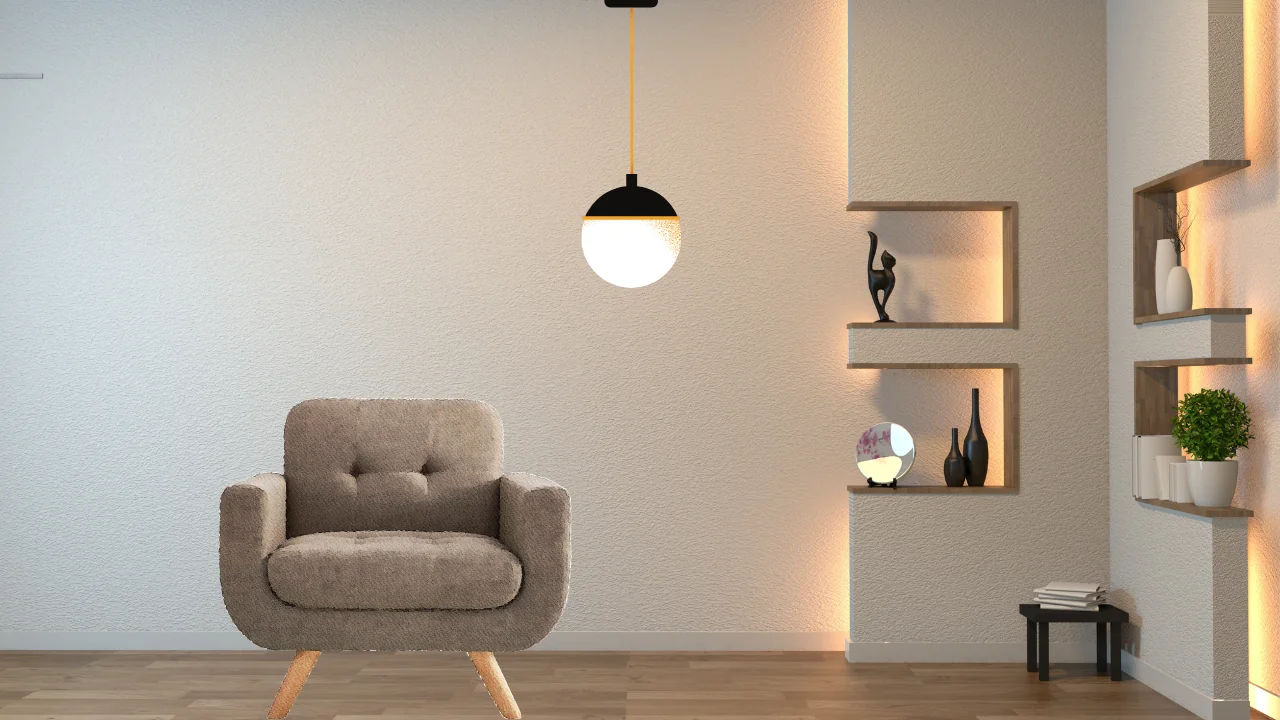As the first rays of sunlight dance across the confluence of the Sava and Danube rivers, Belgrade awakens, its centuries-old stones whispering tales of empires risen and fallen. In 2024, this vibrant capital of Serbia stands as a living museum, where Roman ruins rub shoulders with Ottoman relics and Art Nouveau facades.
For the intrepid history buff, Belgrade offers a treasure trove of landmarks that span over 2,000 years of tumultuous history. Let’s embark on a journey through time and explore the top 10 historical landmarks that make Belgrade a must-visit destination for history enthusiasts in 2024.
1. Kalemegdan Fortress: The Heart of Belgrade’s History
Perched majestically at the confluence of the Sava and Danube rivers, Kalemegdan Fortress stands as a silent sentinel, guarding Belgrade’s secrets for over 15 centuries. This formidable citadel, once a wooden palisade in the 1st century, has evolved through the ages, bearing witness to the ebb and flow of empires.
As you wander through its imposing gates, you’ll traverse layers of history – from Roman castrum to Byzantine castle, from medieval stronghold to Austrian artillery fortification. The fortress, sprawling across 124 hectares, boasts 13 gates and 5 towers, each telling its own tale of siege and salvation.
Within its walls, Kalemegdan Park offers a verdant oasis, home to a military museum showcasing Serbia’s martial past, a natural history museum delving into the region’s flora and fauna, and even a zoo – a stark contrast to the fortress’s martial origins. Don’t miss the Victor Monument, an iconic bronze statue overlooking the rivers, symbolizing Belgrade’s triumph over adversity.
In 2024, Kalemegdan isn’t just a relic of the past. It’s a living, breathing part of Belgrade’s present, where locals jog along ancient ramparts and couples steal kisses in hidden corners. As the sun sets, join the crowd at the western battlements for a breathtaking view that has captivated onlookers for centuries.
2. The Temple of Saint Sava: A Modern Monument with Historical Roots
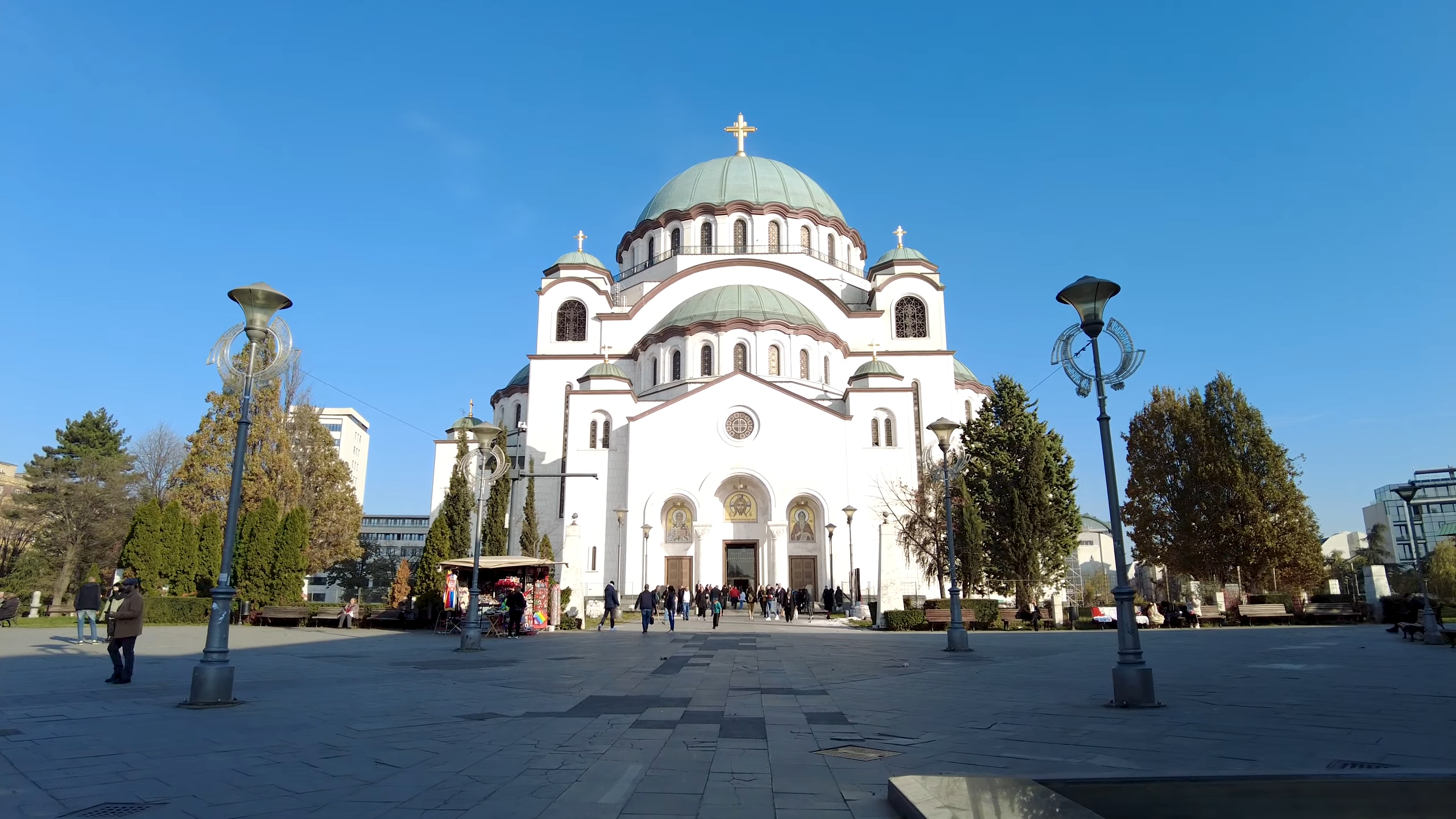
Rising like a colossal white marble dream against the Belgrade skyline, the Temple of Saint Sava is a testament to both ancient faith and modern ambition. This architectural marvel, one of the largest Orthodox churches in the world, stands on Vračar plateau – a site steeped in legend and sacrifice.
It was here, in 1595, that Ottoman ruler Sinan Pasha is said to have burned the relics of Saint Sava, Serbia’s beloved patron saint. Four centuries later, in 1935, construction of the temple began, a phoenix rising from those long-ago ashes. Today, its central dome soars 70 meters high, crowned by a 12-meter-tall gold-plated cross that gleams in the Balkan sun.
Step inside, and you’ll be enveloped by an awe-inspiring space that can accommodate 10,000 worshippers. The interior, adorned with intricate mosaics covering an area of 15,000 square meters, is a masterpiece still in progress. In 2024, visitors can witness history in the making as artists painstakingly complete this monumental work.
The Temple of Saint Sava isn’t just a place of worship; it’s a cultural beacon. Throughout the year, it hosts concerts, exhibitions, and events that draw both locals and tourists. As night falls, the illuminated temple becomes a radiant symbol of Belgrade’s enduring spirit, visible from almost every corner of the city.
3. Skadarlija: Belgrade’s Bohemian Quarter
Step onto the cobblestones of Skadarlija, and you’ll feel as if you’ve traveled back to the late 19th century when this quaint street was the pulsing heart of Belgrade’s artistic scene. Once home to struggling poets, painters, and musicians, Skadarlija has retained its bohemian charm, offering a glimpse into the city’s romantic past.
The quarter’s history as a cultural hub began in the 1830s when it became home to Belgrade’s Roma population. By the end of the 19th century, it had transformed into a haven for artists and intellectuals. Today, Skadarlija’s 400-meter-long street is lined with traditional restaurants, or ‘kafanas’, that have been serving hearty Serbian cuisine for over a century.
Don’t miss the chance to dine at “Tri Šešira” (Three Hats), Belgrade’s oldest kafana, established in 1864. Here, you can savor traditional dishes like sarma (stuffed cabbage rolls) or karađorđeva šnicla (breaded veal steak) while listening to the melodies of wandering musicians playing tamburica, a traditional string instrument.
In 2024, Skadarlija continues to be a living museum of Belgrade’s cultural heritage. Street artists, fortune tellers, and performers add to the vibrant atmosphere, making every visit a unique experience. As you stroll down the lantern-lit street, you’ll understand why Skadarlija has been compared to Paris’s Montmartre – it’s a place where the spirit of old Belgrade lives on, inviting you to be part of its ongoing story.
4. The National Museum of Serbia: A Treasury of History
After years of renovation, the National Museum of Serbia reopened its doors in 2018, and in 2024, it stands as a must-visit destination for history and art lovers. Housed in a magnificent 19th-century building on Republic Square, the museum boasts a collection of over 400,000 objects spanning from prehistoric times to the modern era.
Founded in 1844, the National Museum is Serbia’s oldest museological institution. Its collection includes archaeological treasures, medieval Serbian art, and an impressive array of European paintings. One of its most prized possessions is the Miroslav Gospel, the oldest preserved Cyrillic manuscript, dating back to 1190.
As you wander through the museum’s 5,000 square meters of exhibition space, you’ll encounter artifacts that tell the story of human civilization in the Balkans. From Neolithic figurines to Roman imperial portraits, from Byzantine icons to modernist masterpieces, each exhibit offers a window into a different era.
In 2024, the museum continues to innovate, offering interactive displays and virtual reality experiences that bring history to life. Don’t miss the opportunity to see works by renowned Serbian artists like Paja Jovanović and Uroš Predić, as well as paintings by European masters such as Monet, Renoir, and Picasso.
A visit to the National Museum isn’t just a journey through Serbia’s past; it’s an exploration of the cultural currents that have shaped this crossroads of civilizations. And with free entry on Sundays, there’s no excuse not to immerse yourself in this treasure trove of history.
5. Belgrade Fortress: Exploring the Ancient Citadel
While we’ve touched on Kalemegdan Fortress, the Belgrade Fortress deserves a deeper exploration. This ancient citadel, the core of Kalemegdan Park, is a palimpsest of Belgrade’s history, with each layer revealing a different chapter in the city’s tumultuous past.
The fortress’s strategic location at the confluence of the Sava and Danube rivers has made it a coveted prize for over two millennia. Romans, Byzantines, Serbs, Turks, and Austrians have all left their mark on these stones. Today, you can trace this history through the fortress’s diverse architecture – from the remnants of the Roman castrum to the baroque clock tower built by the Austrians in the early 18th century.
One of the most striking features of the fortress is the Zindan Gate, a 15th-century Ottoman construction that once served as a dungeon. Nearby, the Ružica Church, converted from a gunpowder magazine into an Orthodox place of worship, showcases unique chandeliers made from spent bullet casings and swords – a poignant reminder of the fortress’s martial past.
For a panoramic view of the rivers and the city, climb to the Upper Town and seek out the Victor Monument. This iconic statue, created by Ivan Meštrović in 1928, has become a symbol of Belgrade. Originally intended for Terazije Square, it found its home in the fortress due to public outcry over its nudity.
In 2024, the Belgrade Fortress continues to evolve. Archaeological excavations regularly uncover new secrets, while conservation efforts ensure that this living monument will continue to tell Belgrade’s story for generations to come.
6. Knez Mihailova Street: A Walk Through Belgrade’s Past and Present
Knez Mihailova Street, Belgrade’s main pedestrian and shopping zone, is more than just a bustling thoroughfare – it’s a journey through the city’s architectural and cultural history. Stretching for 1 kilometer from Terazije to Kalemegdan, this street has been the heart of Belgrade since the late 1870s.
The street’s history, however, dates back much further. In Roman times, it was part of the main road leading to the forum of Singidunum, the ancient predecessor of Belgrade. During the Ottoman period, it was lined with oriental-style buildings. But it was in the late 19th century, after Serbia gained independence, that Knez Mihailova took on its current appearance.
As you stroll down the street, you’ll be surrounded by a stunning array of architectural styles. Neo-Renaissance, Art Nouveau, and Modernist buildings stand side by side, each telling a story of the era that shaped it. Look out for the Serbian Academy of Sciences and Arts, housed in a beautiful 1924 building, and the Ruski Car (Russian Tsar) tavern, a favorite haunt of Belgrade’s intelligentsia in the early 20th century.
In 2024, Knez Mihailova remains a vibrant mix of old and new. Street performers entertain crowds near century-old bookshops, while modern boutiques occupy buildings that once housed Belgrade’s first banks and hotels. Don’t miss the opportunity to explore the side streets and hidden courtyards, where you might stumble upon a quaint café or an artist’s studio.
At the end of your walk, you’ll find yourself at the entrance to Kalemegdan Park, ready to explore the next chapter in Belgrade’s rich history. Remember, Knez Mihailova isn’t just a street – it’s a living timeline of Belgrade’s evolution from Ottoman outpost to modern European capital.
7. The Nikola Tesla Museum: Celebrating Serbia’s Greatest Inventor
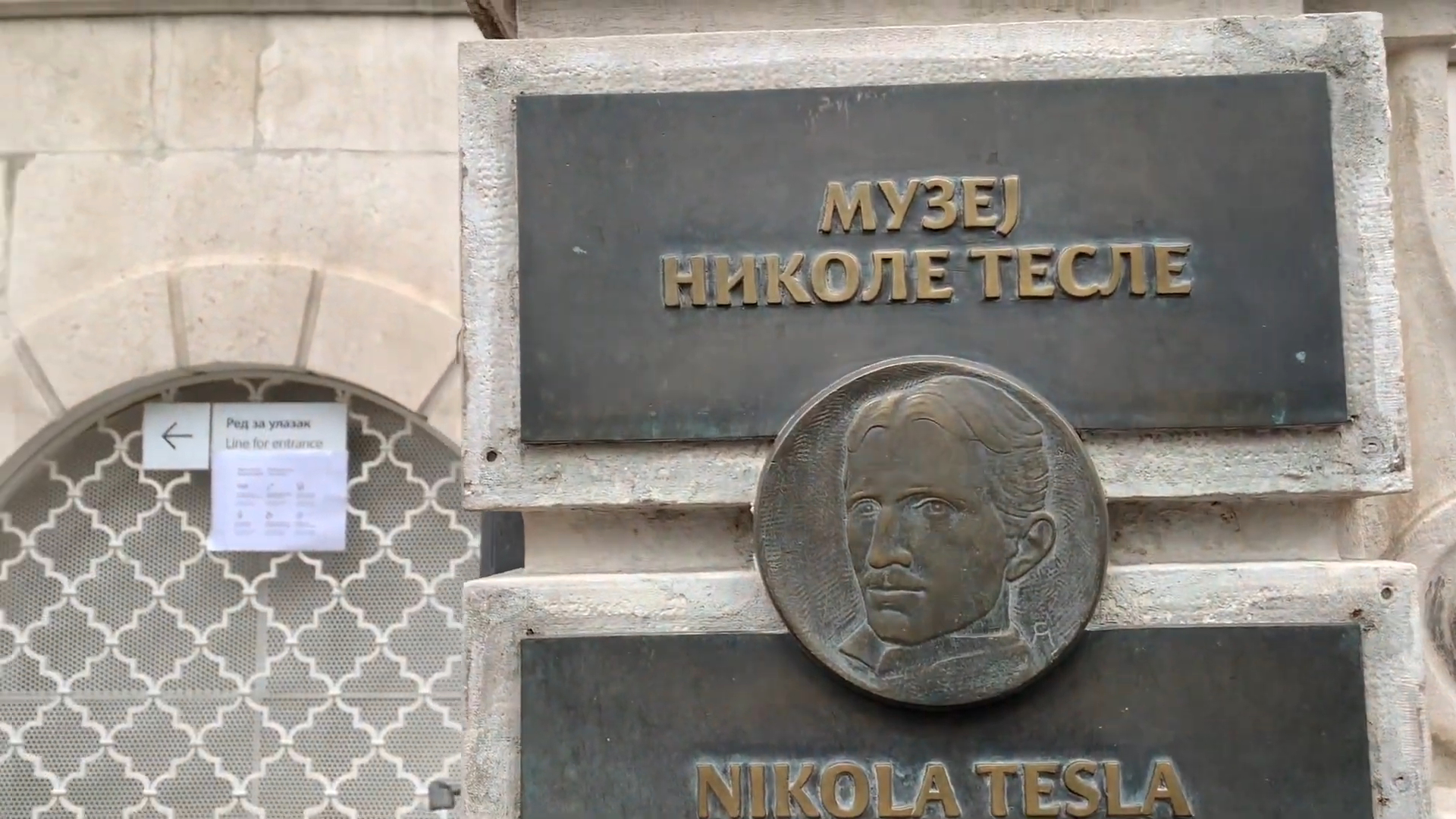
In a modest villa on Krunska Street lies a museum dedicated to one of the world’s most brilliant minds – Nikola Tesla. Established in 1952, just nine years after Tesla’s death, this museum is a pilgrimage site for science enthusiasts and a testament to Serbia’s contribution to the modern world.
The museum houses over 160,000 original documents, 2,000 books and journals, 1,200 historical technical exhibits, and 1,500 photographs and photo plates of Tesla’s original works. But it’s not just a static display – the museum brings Tesla’s inventions to life through interactive exhibits that demonstrate the principles of electricity and magnetism.
One of the most popular attractions is the Tesla coil, which generates artificial lightning bolts, giving visitors a tangible sense of Tesla’s groundbreaking work. You can also see working models of Tesla’s alternating current (AC) motor and his remote-controlled boat, both revolutionary inventions that shaped the 20th century.
Perhaps the most poignant exhibit is the golden sphere containing Tesla’s ashes. This final resting place of the great inventor adds a personal touch to the scientific wonders on display, reminding visitors of the human behind the genius.
In 2024, the Nikola Tesla Museum continues to inspire new generations of innovators. With virtual reality experiences and augmented reality displays, the museum offers a bridge between Tesla’s visionary past and our technological future. It’s a must-visit for anyone interested in the history of science and the power of human ingenuity.
“I don’t care that they stole my idea . . I care that they don’t have any of their own” ― Nikola Tesla
8. Zemun: A Historic Town Within Belgrade

Across the Sava River lies Zemun, a charming town that, while officially part of Belgrade since 1934, retains its distinct character and history. Once a separate city under Austro-Hungarian rule, Zemun offers visitors a glimpse into a different facet of Belgrade’s past.
The heart of old Zemun is Gardoš, a hilltop neighborhood crowned by the Millennium Tower, also known as the Tower of Janos Hunyadi. Built in 1896 to celebrate a thousand years of Hungarian settlement in the Pannonian plain, the tower now offers panoramic views of Belgrade and the Danube.
As you wander down the cobblestone streets of Gardoš, you’ll feel as if you’ve stepped into a different era. The pastel-colored houses, with their distinctive Austro-Hungarian architecture, stand in stark contrast to the brutalist buildings of New Belgrade visible across the river.
#visitbelgrade #gobelgrade #sindjelicevaulica #zemun
Аутор фотографије📸: Драган Обрић pic.twitter.com/emqOsy1YQD— Visit Belgrade (@TOBelgrade) September 14, 2020
Don’t miss the chance to stroll along the Zemun Quay, one of the most beautiful promenades in Belgrade. Here, you can watch fishermen cast their lines into the Danube, just as they have for centuries. The quay is lined with fish restaurants, where you can sample local specialties like smuđ (pike-perch) while enjoying views of the Great War Island, a nature reserve in the middle of the river.
In 2024, Zemun continues to be a favorite spot for both locals and tourists seeking a respite from the bustle of central Belgrade. Its unique blend of Balkan and Central European influences makes it a fascinating destination for history buffs and culture seekers alike.
9. The House of Flowers: Tito’s Mausoleum
Nestled in the leafy Dedinje district, the House of Flowers stands as a complex monument to Yugoslavia’s turbulent 20th-century history. This mausoleum, the final resting place of Josip Broz Tito, offers visitors a chance to reflect on the legacy of a man who shaped the destiny of the Balkans for nearly four decades.
Originally built in 1975 as Tito’s winter garden, the House of Flowers was converted into a mausoleum following his death in 1980. The name comes from the abundance of flowers that once filled the space and continue to surround Tito’s white marble tomb.
But the House of Flowers is more than just a grave site. It’s part of the Museum of Yugoslavia complex, which includes exhibitions on Tito’s life, the history of Yugoslavia, and the country’s role in the Non-Aligned Movement. Here, you can see Tito’s vast collection of relay batons, gifts from across Yugoslavia and around the world, and even his iconic Blue Train.
In 2024, the Museum of Yugoslavia continues to grapple with the complex legacy of Tito and the country he led. Interactive exhibits and guided tours offer insights into life in socialist Yugoslavia, the break-up of the federation, and the ongoing process of coming to terms with this recent history.
A visit to the House of Flowers is a journey into the heart of 20th-century Balkan history. Whether you view Tito as a benevolent dictator or a controversial figure, this site offers a unique perspective on a pivotal period that continues to shape the region today.
10. St. Michael’s Cathedral: Belgrade’s Oldest Church
Tucked away in the heart of old Belgrade, St. Michael’s Cathedral stands as a serene witness to the city’s turbulent past. Built between 1837 and 1840, it’s the oldest church in Belgrade and a prime example of Serbian Empire style architecture.
The cathedral’s history is intertwined with the birth of modern Serbia. It was here that the remains of Prince Miloš and Prince Mihailo Obrenović were laid to rest, and where the declaration of war against Turkey was read in 1912. The church has survived two world wars, serving as a beacon of hope and continuity for the people of Belgrade.
Step inside, and you’ll be greeted by the soft glow of candlelight illuminating gilded icons and frescoes. The iconostasis, painted by Dimitrije Avramović, is considered one of the most beautiful in Serbia. Look out for the throne of Serbian ruler Karađorđe, a poignant reminder of the church’s role in Serbia’s struggle for independence.
Outside, the cathedral’s bell tower, added in 1855, stands guard over a small park. Here, you’ll find the graves of two significant figures in Serbian history: Vuk Karadžić, the reformer of the Serbian language, and Dositej Obradović, Serbia’s first minister of education.
In 2024, St. Michael’s Cathedral continues to be an active place of worship and a symbol of Belgrade’s resilience. Regular services and concerts of spiritual music offer visitors a chance to experience the living tradition of Serbian Orthodoxy.
As you stand before this venerable church, take a moment to reflect on the countless stories it has witnessed – of faith, of struggle, of renewal. In many ways, the history of St. Michael’s Cathedral is the history of Belgrade itself.
Belgrade, with its rich tapestry of historical landmarks, offers visitors in 2024 a unique journey through time. From ancient fortresses to modern mausoleums, each site tells a part of the city’s complex and fascinating story.
As you explore these landmarks, you’ll discover that Belgrade is more than just a destination – it’s a living, breathing testament to the resilience of the human spirit in the face of centuries of change. So pack your curiosity and your comfortable shoes, and prepare to walk in the footsteps of emperors, inventors, and revolutionaries in one of Europe’s most underrated historical treasures.
Fun Fact: Did you know that many visitors are drawn to explore some of the cleanest cities in the world during their travels, although Belgrade is not one of the cleanest cities, it is in top 20!

